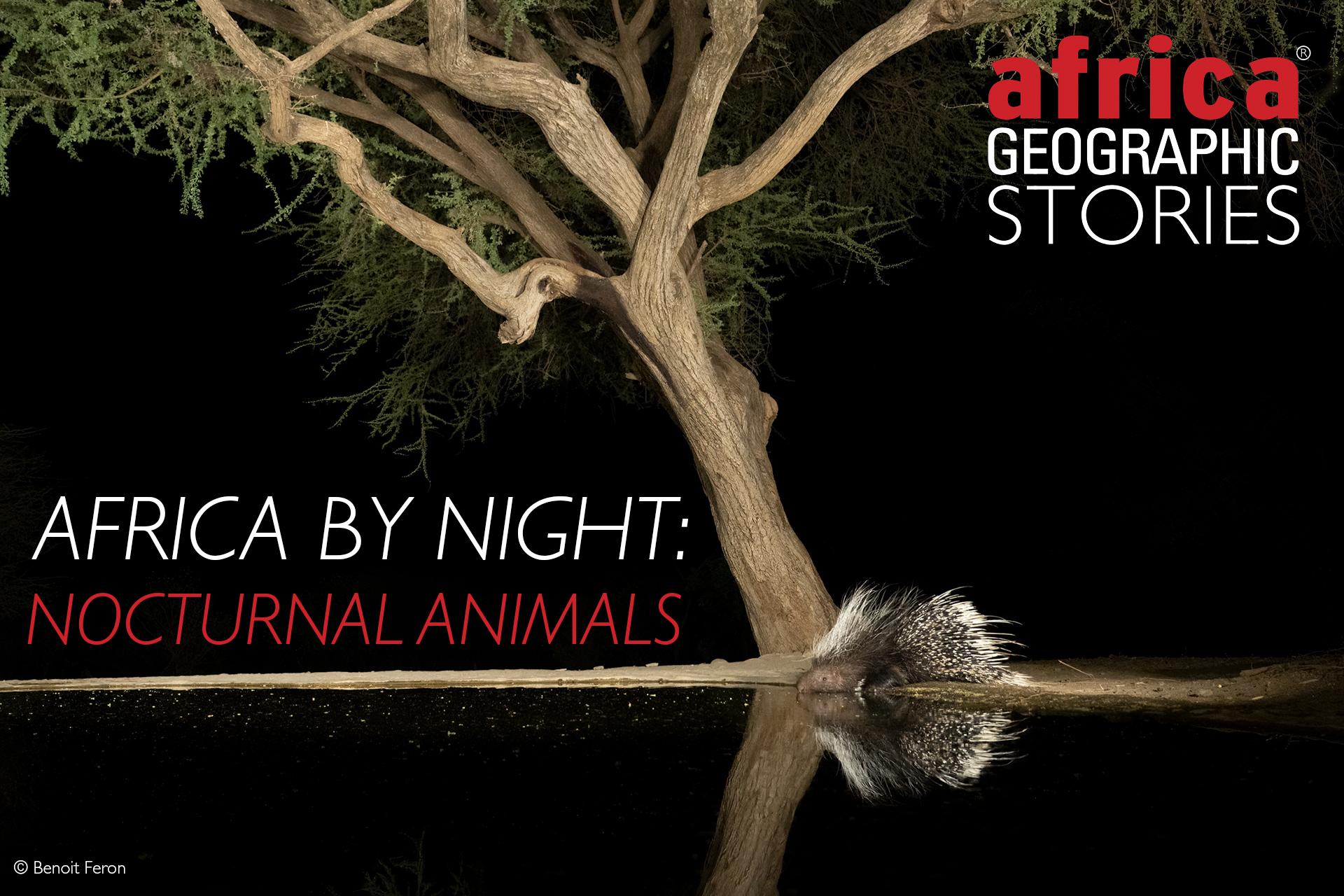
12 nocturnal animals (and where to find them)


As the sun dips below the horizon and most safari guests start to think longingly of the five-course dinner awaiting them at the lodge, the nocturnal animals of the African night begin to stir. Noses twitch, pupils dilate, and limbs stretch out in preparation for the long, dark hours ahead.
They may be challenging to find, but Africa’s nocturnal animals are all the more rewarding for their rarity. Feast your eyes on our list of favourite lucifugous beasties and some advice on where to start the search.
 Want to join us in an exploration of the African night? Check out these African safaris offering ample experiences of nocturnal and diurnal animals.
Want to join us in an exploration of the African night? Check out these African safaris offering ample experiences of nocturnal and diurnal animals.
Pangolin
For an animal that looks somewhat like an anxious walking artichoke, the pangolin must be one of the most charming little characters roaming the continent. These inoffensive eccentrics are covered in a layer of keratin scales and sport powerful claws and a long sticky tongue for lapping up termites and ants.
Where to start? During the winter months in the arid areas of southern Africa, ground pangolins often emerge before dusk to begin their myrmecophagous hunt. Guests at Tswalu Kalahari Reserve in South Africa tend to have excellent pangolin luck.

Honey badger
Few things in life genuinely live up to their reputation, but the honey badger certainly does. Known for their tenacity and toughness, they pack a punch that belies their small size when threatened but are otherwise largely content to simply go about their business.
Where to start? Honey badgers are predominantly nocturnal animals but are often active during the cooler winter days. Though they thrive in many habitats, arid regions like the Central Kalahari Game Reserve in Botswana offer a good chance to spot one due to the sparse vegetation (and their bolshie tendency to visit the campsites). To plan your next Botswana safari, click here.
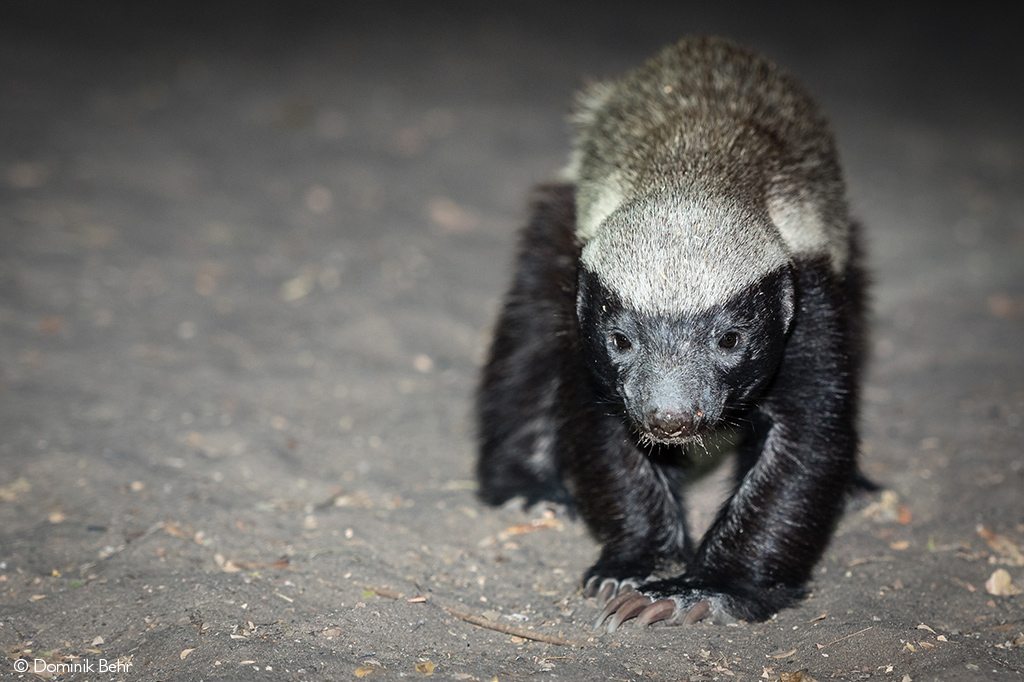
Bush baby
Bush babies (or galagos as they are more formally known) are a group of nocturnal primates found throughout sub-Saharan Africa. The continent’s myriad species come in many shapes and sizes, some utterly adorable. This is especially true of the tiny lesser Galagos, with their enormous bat-like ears and wide, surprised eyes.
Where to start? Almost anywhere on safari! Grab a spotlight or a flashlight and keep an eye out for quick reflection of their eye-shine as they leap from tree to tree. But be ready – these nocturnal animals can move fast! To browse our best African safaris on offer, click here.
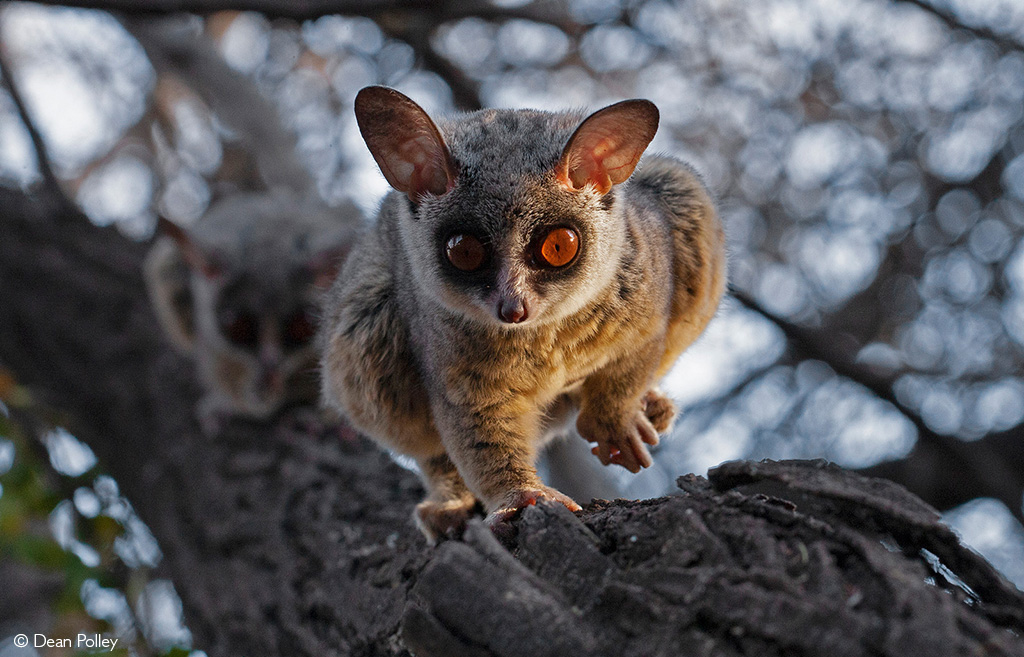

Aardvark
The unique aardvark, with its ginormous rabbit ears and pig-like snout, is one of Africa’s weirdest and more wonderful offerings. Aardvarks have poor eyesight and can be hyper-focused on their termite prey while foraging. As a result, a careful and considered approach may be rewarded with a lengthy and very special sighting.
Where to start? Aardvarks are generally shy animals, but, like many of the nocturnal animals on this list, cold winter temperatures usually force them to search for food before dusk. The Karoo region in South Africa is home to (relatively) high densities of aardvark.

Genet
With needle-sharp teeth and a ferocious pounce, the lithe genets of Africa spend their evenings terrorising the tiny mammals, birds, and reptiles of the forests, savannas, and grasslands. These little predators are the epitome of grace and agility, seemingly flowing over obstacles, up trees and through the undergrowth.
Where to start? Genets are found throughout much of sub-Saharan Africa, though extended sightings are rare outside of a lodge context (where they have learned to associate people with food). There have been reports of melanistic genets wandering the plains of the Maasai Mara. To plan your Maasai Mara safari, click here.

Civet
The African civet, with its masquerade facial markings, makes many people think of a raccoon, though the two species are unrelated. They are widely distributed throughout Africa’s savannah and forest habitats, but the civet’s nocturnal and elusive habits make encountering one in the wild a rare treat.
Where to start? Civets are creatures of habit, generally walking the same well-trodden paths night after night. There are several lodges in the Greater Kruger with “resident” civets that pass through during the hours of darkness. To plan your Greater Kruger safari, click here.
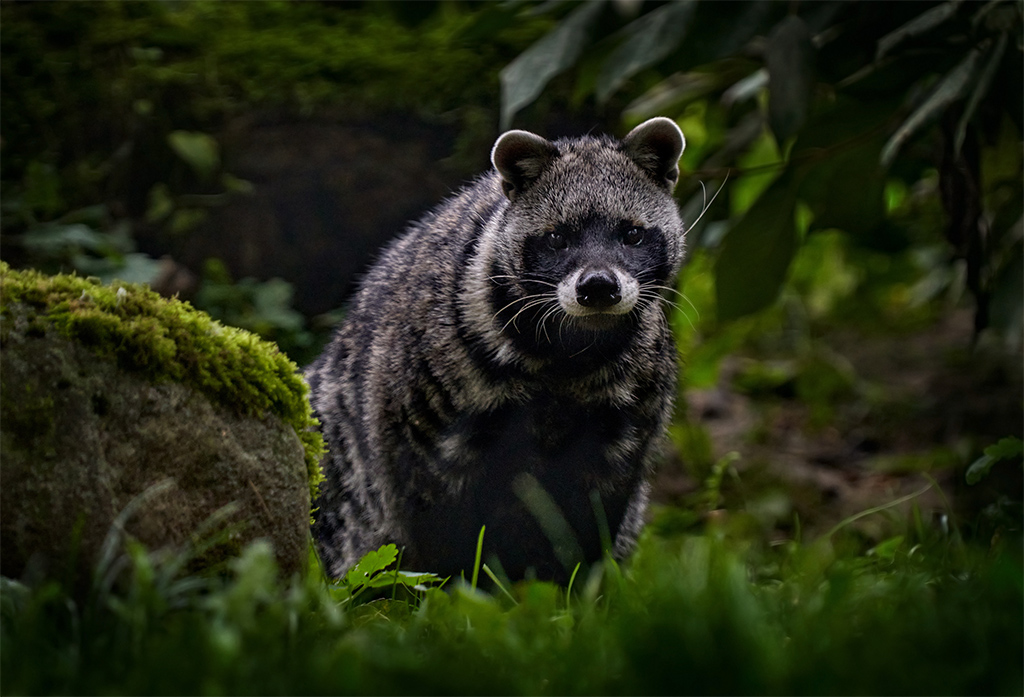

Cape porcupine
These prickly customers are the largest rodents in Africa – stocky, robust animals with short limbs and a protective quiver of barbed quills. Porcupines are decidedly family-oriented despite their somewhat antisocial appearance. It is not uncommon to encounter a family unit consisting of a monogamous male and female and their latest porcupette foraging together.
Where to start? Cape porcupines are widely distributed throughout most of sub-Saharan Africa, and the chances of encountering one on a night drive are roughly the same in many of the more popular safari destinations. Arid areas like the Kalahari and Namibia may offer the best opportunity to spot one because the vegetation cover is less dense.
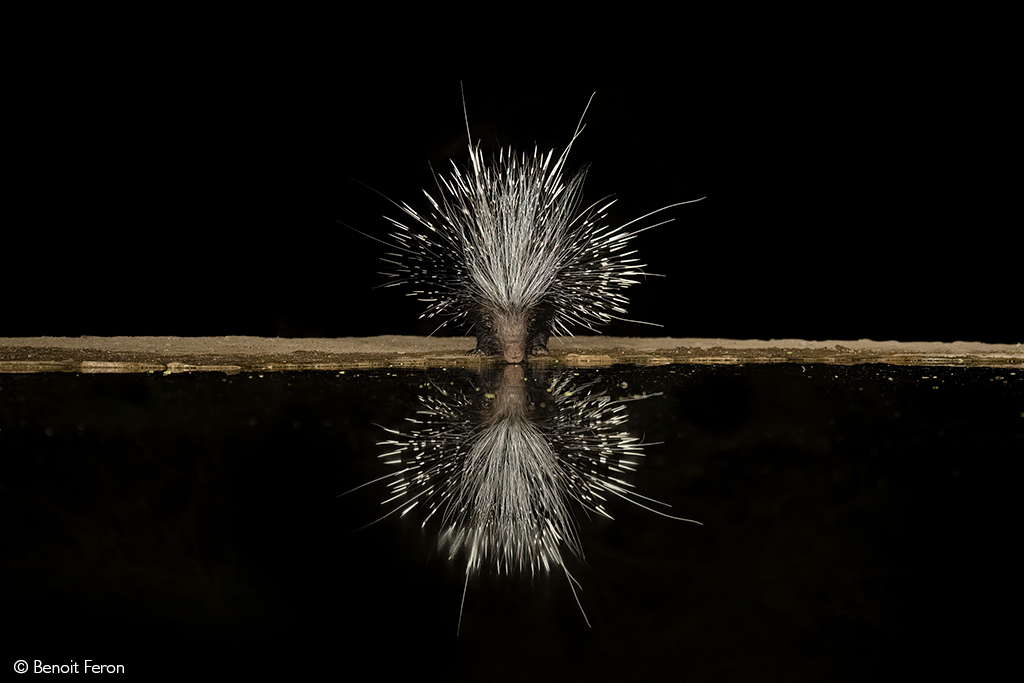
Aye-aye
Of the 12 fascinating animals on this list, Madagascar’s aye-aye is perhaps the most fantastical and outlandish. The world’s largest nocturnal primate is technically a lemur but sports several unusual anatomical adaptations that set it apart, including constantly growing incisors and a sixth digit (a “pseudo thumb”) on the front paws. The long, thin third finger is used woodpecker-like to tap on bark to locate insects and then fish the grubs out of their hiding places.
Where to start? The dense forests of Nosy Mangabe off the coast of eastern Madagascar offer some of the most reliable sightings of these endangered lemurs. They were introduced to the island during the 1960s as a conservation initiative and have flourished ever since.

Springhare
The bouncy springhare is Africa’s answer to the kangaroo, albeit in miniature form. At night, these spring-loaded rodents emerge from their underground burrows to forage, using their long tails to balance as they hop around searching for juicy roots and stems.
Where to start? Springhares thrive in the semi-arid regions of southern Africa, so a night drive in Madikwe Game Reserve in South Africa or the Tuli Block in Botswana may well reveal a glimpse of a lively springhare (or ten). To find out more about Madikwe and to browse safaris to Madikwe, click here.

Aardwolf
The shy and elusive aardwolf is perhaps one of the continent’s most underappreciated animals. These unique animals belong to the hyena family but are entirely myrmecophagous (they only eat termites and ants). They are also probably the most winsome of all the hyena species, with dramatically striped coats, delicate facial features, and oversized ears.
Where to start? There are two distinct populations of aardwolf in Africa, one in southern Africa and the other in East Africa. The best chance of finding one in southern Africa would be through exploring the vast Kalahari Basin, perhaps in Kgalagadi National Park in South Africa or Botswana’s salt pans. To find out more about safaris in the salt pans, click here.
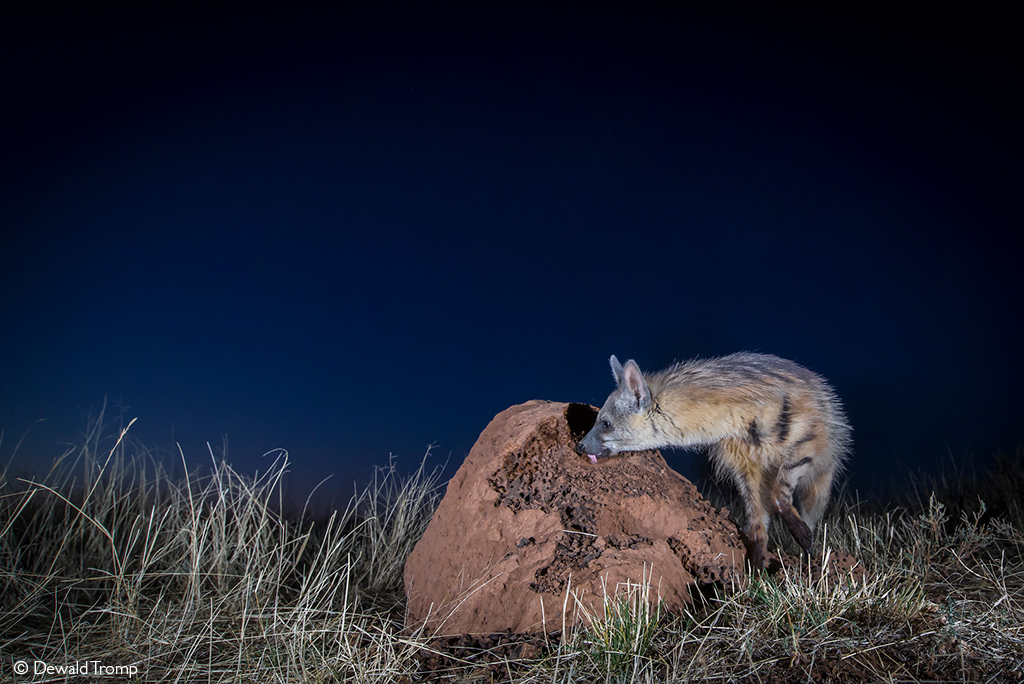

Bushpig
It seems astonishing that such a large animal might so easily evade visitors, yet few safari-goers ever glimpse the stocky, shaggy bushpig in the wild. Though often described as “dangerous” and “aggressive”, these porcine omnivores are wary and circumspect and generally avoid humans (unlike their brash and fearless cousins, the warthog).
Where to start? Bushpigs are adaptable animals found across a wide range of habitats. However, there are few areas where they are sufficiently habituated to people to make for reliable sightings. Some campsites in Hluhluwe-iMfolozi Park are known for their nightly visits from marauding bushpigs, though they should be treated with absolute respect and given plenty of space.

Bat-eared fox
As the name implies, bat-eared foxes are defined by their enormous ears, reaching almost a third of their total body length. They are the only insectivorous canid species in the world, with a unique dental arrangement designed to suit their unusual diets. They generally forage in small families and are endlessly entertaining, with oddly sardonic expressions beneath their ridiculously oversized ears.
Where to start? Visitors to Marakele National Park in the heart of South Africa’s Waterberg Mountains and Nossob Camp in the Kgalagadi National Park regularly enjoy delightful bat-eared fox sightings. They are also regularly encountered in parts of the Serengeti National Park in Tanzania and the neighbouring Maasai Mara National Reserve. To plan your Serengeti safari, click here.

To comment on this story: Login (or sign up) to our app here - it's a troll-free safe place 🙂.![]()




